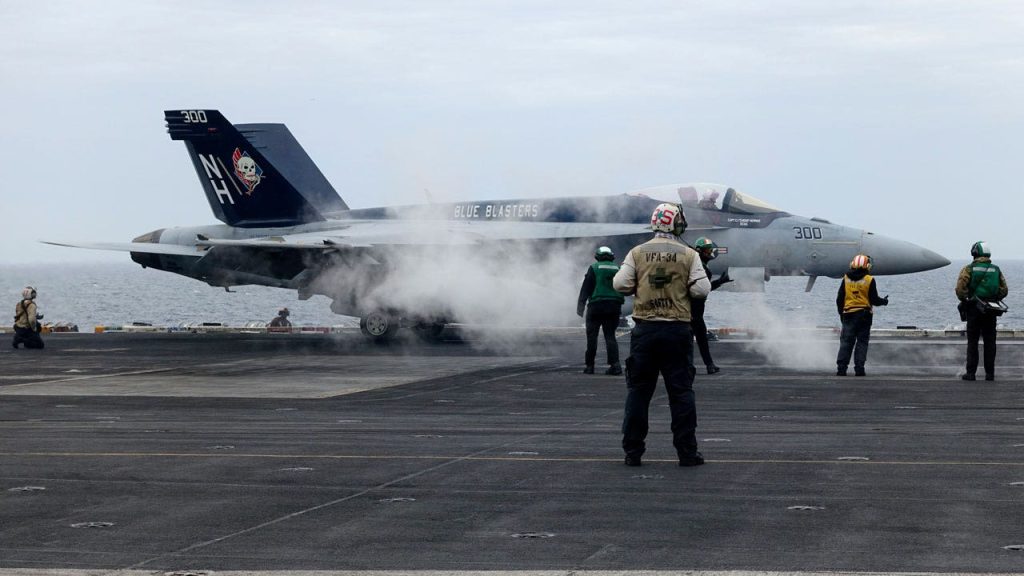The USS Theodore Roosevelt led a joint exercise with allies Japan and South Korea in the East China Sea amidst concerns about China’s territorial claims. The drills focused on improving communication, data sharing, and crisis preparedness among the three nations. These exercises were meant to strengthen solidarity in the face of China’s aggressive actions in the region, as tensions between the U.S. and China have been escalating. The involvement of Japan and South Korea in the drills also signaled a warming of relations between the two neighbors, who have had strained ties due to historical conflicts.
China expressed dissatisfaction over Japan’s negative moves during Prime Minister Fumio Kishida’s meetings with U.S. President Joe Biden and Philippine President Marcos Jr. Chinese officials accused the U.S. and Japan of undermining regional peace and stability, while reiterating their commitment to defending their security and development interests. The joint exercises were part of the U.S.’s efforts to deepen security and diplomatic engagement with Indo-Pacific nations, in an attempt to counter China’s influence in the region. The drills focused on enhancing the readiness of the three nations against nuclear and missile threats from North Korea, further highlighting the importance of coordinated efforts among allies.
The drills also addressed concerns about increasing tensions in the South China Sea, where China has been clashing with the Philippines over disputed territories. The Philippines, along with Vietnam, Malaysia, Indonesia, Brunei, and Taiwan, are concerned about China’s activities in the region, as it serves as a key sea lane for global trade. China has defended its actions in the South China Sea, accusing the U.S. of creating tensions and building anti-China alliances. The U.S. has been working on forming partnerships with countries in the Indo-Pacific to maintain peace and stability in the region, despite China’s objections.
The Japanese and South Korean navies participated in the joint exercise to enhance their collective response capability against threats from North Korea, including nuclear and missile aggression. The drills included anti-submarine exercises and maritime interdiction training to prepare for potential threats posed by North Korean submarines and illegal weapon transfers. These exercises were part of ongoing efforts to strengthen the security partnerships between the U.S., Japan, and South Korea, in response to the evolving security challenges in the region. The joint exercises demonstrated the commitment of the three nations to work together to address shared security concerns in the Indo-Pacific.
The dueling military maneuvers and diplomatic talks occurred amidst a backdrop of escalating tensions between the U.S. and China over regional security issues. China’s activities in the East and South China Seas have raised concerns among neighboring countries and prompted the U.S. to deepen its engagement with regional partners. The participation of Japan and South Korea in joint exercises with the U.S. reflects a growing cooperation among like-minded countries seeking peace, security, and stability in the region. By enhancing communication, coordination, and readiness, these exercises aim to deter potential threats and maintain regional peace in the face of increasing geopolitical tensions.
The joint naval exercises and diplomatic meetings between the U.S., Japan, and South Korea underscore the importance of multilateral cooperation in addressing security challenges in the Indo-Pacific region. The focus on enhancing communication and crisis preparedness among the three nations reflects a unified approach to dealing with threats from North Korea and China. These efforts to deepen security partnerships and strengthen alliances demonstrate a shared commitment to upholding peace and stability in the region. Despite ongoing tensions and territorial disputes, the U.S., Japan, and South Korea are working together to navigate complex security challenges and promote a rules-based international order in the Indo-Pacific.


